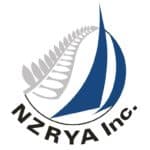1. OBJECTIVE
At the conclusion of this module, you should have a good understanding of the considerations regarding how to set a fair start line and be able to correctly manage a starting procedure.
2. REFERENCES
For this module, you will need access to the current versions of the following references:
- Racing Rules of Sailing 2021 – 2024 (RRS)
- NZRYA Race Management Manual (NZRYA RMM)
- NZRYA Standard Notice of Race (NZRYA SNOR), and
- NZRYA Standard Sailing Instructions (NZRYA SSI)
3. SUGGESTED READING
You should read the following and any other section to aid you understanding for this module:
- Racing Rules of Sailing
- Part 2: When Boats Meet
- Section D: Other Rules
- 21: Starting Errors; Taking Penalties; Backing a Sail
- Section D: Other Rules
- Part 3: Conduct of a Race
- 29: Recalls
- 30: Startin Penalties
- 31: Touching a Mark
- 32: Shortening or Abandoning after the Start
- Appendix E: Radio Sailing Racing Rules
- E3: Conduct of a Race
- Part 2: When Boats Meet
- NZRYA Race Management Manual
- Race Management Policy
- 12: Setting the Starting Line
- 14: Progression of Racing – Requests for Time
- 15: Fleetboard Administration
- Job Description: Race Officer
- 5: Start
- Job Description: Start/Finish Line Officials
- Race Management Policy
- NZRYA Standard Sailing Instructions
- 8: The Start
- 9: Racing Times
4. WHAT SHOULD YOU AIM FOR WHEN SETTING A START LINE?
Starting lines will generally be laid square to the median sailing wind, or with a very slight (5 to 10 degree) port end bias. Factors such as current, favoured side of the course, expected wind shifts and other variables may justify variation from this guideline.
During the event, it will become obvious to the Race Officer if one end of the line is considered favoured by the competitors. The Race Officer should observe how the fleet reacts to the bias on the first starting line and adjust as required for subsequent starts. The Race Officer should carefully observe competitor behaviour at the start and, regardless of what the wind vane or other indicator devices might thereafter be showing, continually re-adjust the line bias until the competitors spread themselves relatively evenly along the start line. This establishes a fair starting line.
The Race Committee should use as a guide to determine the length of the starting line, the minimum Starting Line length = number of boats x boat length x 1.5. A larger multiplier may be used in strong winds or heavy seas.
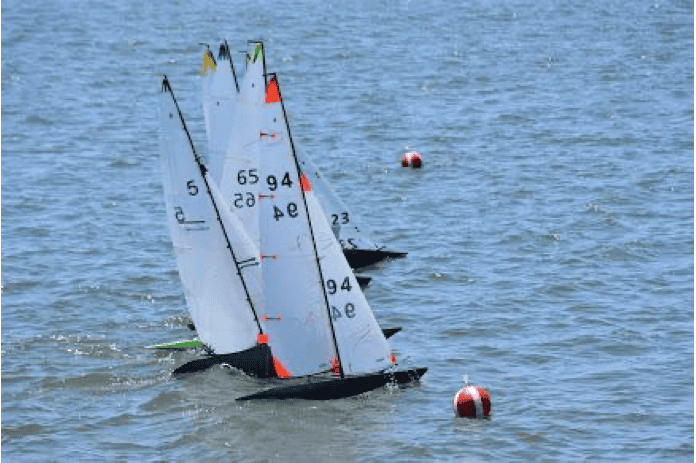
The Race Officer needs to ensure that the start line is clearly visible from the control area and there is sufficient water behind the line for the number of starting boats to safely manoeuvre before the start. The line should be placed to set the longest first leg that is practical.
5. REQUESTS FOR TIME FOR RIG CHANGES and REPAIRS
During a regatta, there may be times when changes in wind strength will occur. Skippers will want to change their rig, and may request time to do so. The decision regarding awarding time for this to occur must follow the basic fundamental principle of fairness to all skippers.
Requests for time for rig changes should be considered in context. If it is clear that conditions have altered and a number of skippers request time to change their rig, then it is fair to allow all skippers time. If conditions have not changed, or if skippers have been given time very recently to change rigs but have decided not to make use of it, then keep the racing moving.
Allow time for boats that have been promoted or demoted and are scheduled to sail in the next heat to change rigs when requested. This is fair because the other skippers who have not been sailing have had that time to make changes.
If a boat is awarded redress because she was damaged, the Racing Rules (E6.9) allow redress to include reasonable time, but not more than 30 minutes, to make repairs before her next heat/race.
Time is not normally permitted for the purpose of changing batteries, except for a boat which has just completed a heat and is scheduled to sail in the next heat.
6. POSTPONING A RACE DURING THE START PROCEDURE
The Race Officer should postpone a race during the starting procedure in response to adverse conditions depriving boats of a fair chance of a good start.
These may include, but are not limited to:
- a significant shift in the median wind direction
- a drifting mark
- other boats interfering with the boats starting
- inappropriate length or angle of the starting line
- a reduction in visibility affecting the ability of the Race Officer/s to sight the line, or identifypremature starters
- errors in the timing of the start, or in the timing signals
- any other factor affecting the fairness of the start for all competitors
- if any wind shift occurs before the starting signal such that it significantly increases the riskof a general recall.
In rapid wind oscillations the Race Officer should endeavour to lay a starting line based on the mean oscillations expected.
If the Race Officer determines that adjusting the starting line is likely to improve the chances of a fair start without a general recall, then a postponement up to the last second prior to the start may be considered.
For a postponement that the Race Committee anticipates will be longer than ten minutes, two sound signals followed by an announcement will be made. Prior to recommencement of racing, a sound signal and announcement will be made approximately five minutes prior to the warning signal of the next race.
7. THE COUNTDOWN
The requirements for starting races are set out in RRS E3.4.
A two-minute countdown is used at ranking events and all international events. The Race Officer will announce that the countdown will commence in “X minutes”, allowing skippers reasonably fair time to reach the starting area. The racing rules commence at the “one minute to start” call. The race starts at the first sound of the word “Start”.
There is a trend for one-minute tapes to be used at some regional events in the belief that this will save time and more races can be achieved. This is not the case as the Race Officer must wait until skippers get to the start line before putting on the tape and therefore there is little time saved. In the event that a one-minute tape is used, it directly affects RRS 30.1, 30.3 and 30.4. As these rules commence at the last minute before the start, any boat in breach of 30.1 when the tape is turned on must sail across an extension to the pre-start of the line and in the case of 30.3 and 30.4, all boats in the triangle formed by the starting line and first mark when the tape is turned on are in breach of these rules and therefore should be disqualified without a hearing.
8. JUDGING THE START
The Starting Judge (if there is one) or the Race Officer shall position himself so as to look directly down the course side of the line in order to accurately determine if there is a clear start or if an Individual or General Recall is required. If all boats start correctly the Race Officer should identify this by hailing “clear start” or words to that effect.
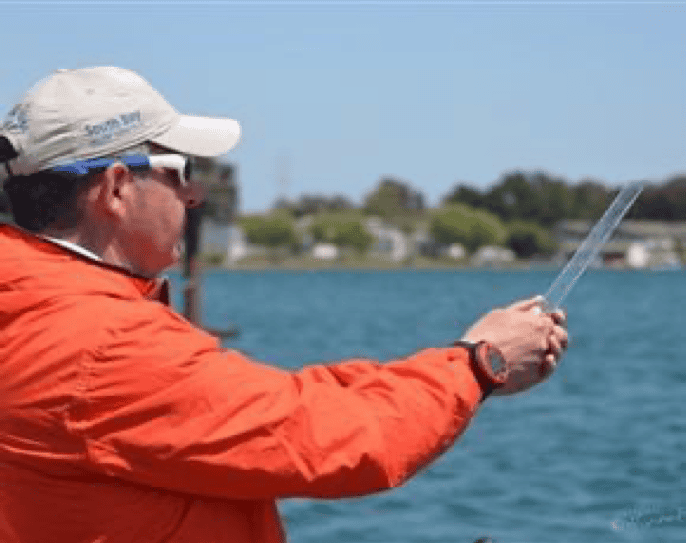
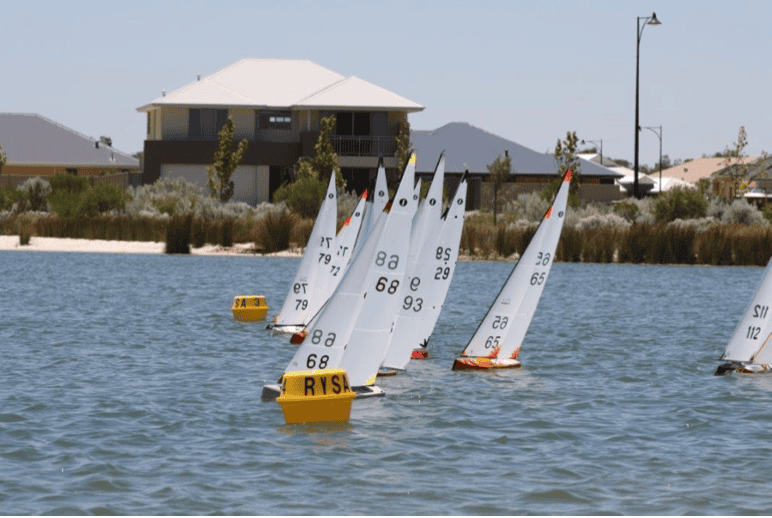
9. INDIVIDUAL RECALL
If there is no designated starter, the Race Officer generally undertakes the responsibility to call Individual or General Recall. If any part of a boat (or boats) is on the course side of the start line at the starting signal, and can be identified, the Race Officer is to recall them by twice hailing their sail number. This is spelled out in E3.5. An Individual recall should be called within five seconds of the start.

There is no restriction on the number of boats that can be recalled, as long as the Race Officer can identify all of the boats involved. When a boat is On Course Side (OCS) at her starting signal, she initially retains all of her rights. However, when she turns back towards the start line she must keep clear of all boats not doing so. A boat may be on the course side of the starting line prior to the starting signal provided it returns fully to the pre-course side of the line before starting.
A boat may dip the line after an Individual Recall provided:
- It returns fully to the pre-course side of the line,
- It does not interfere with other boats while returning to start and;
- “I Flag”, “U Flag” or “Black Flag” are not in force –(Rules 30.1, 30.3 and 30.4).
Boats recalled at a start that fail to return to the pre-start side of the start line are to be recorded as OCS. This means the boat was on the course side of the start line and failed to start correctly. The Race Officer has the power to allocate an OCS to a boat which is on course side at the start signal, and does not return under Appendix A5:
A5 SCORES DETERMINED BY THE RACE COMMITTEE
A boat that did not start or finish or comply with rule 30.2, 30.3, 30.4 or 78.2, or that retires or takes a penalty under rule 44.3(a), shall be scored accordingly by the race committee without a hearing. Only the protest committee may take other scoring actions that worsen a boat’s score.
You need to look also at the definition of “start”:
Start A boat starts when, having been entirely on the pre-start side of the starting line at or after her starting signal, and having complied with rule 30.1 if it applies, any part of her hull, crew or equipment crosses the starting line in the direction of the first mark.
SO – a boat which is on the course side of the starting line when the start signal sounds and does not return to the pre-start side of the start line did not start.
10. WHAT HAPPENS IF YOU CANNOT IDENTIFY THE SAIL NUMBER OF THE RECALLED BOAT?
If the Race Officer is unable to ascertain the sail number of the OCS boat immediately, they may call some other identifier (e.g. “the blue boat at the pin end”) until the sail number is identified.
If the Race Officer is unable to call the sail number immediately, they may consult with his/her fellow start officials to confirm the sail number of the offending boat and then call the numbers deemed to be OCS at the start.
If the sail number of the boat judged to be OCS is not able to be identified within one minute after the start, the Race Officer should then abandon and restart the race. Allowing the race to continue when there has been one boat OCS but unidentified, is unfair on the other boats who started correctly.
11. GENERAL RECALL
If the Race Officer is unable to identify all boats that were on the course side of the start line at the starting signal, he may initiate a general recall by making two sound signals and twice hailing “General Recall”.

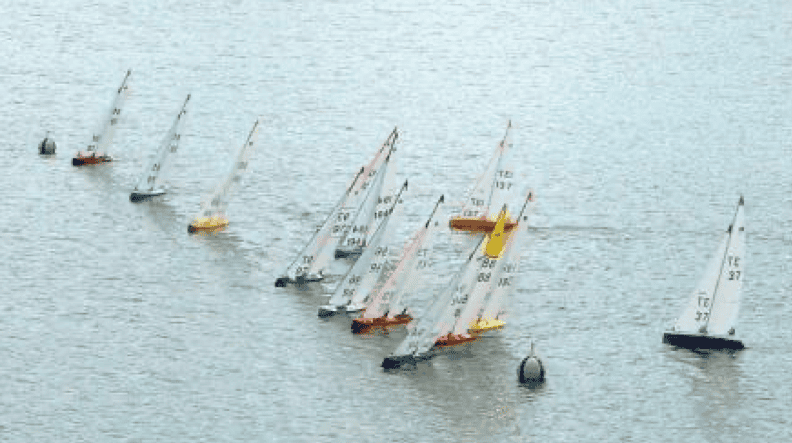
Under the provisions of NZRYA Standard Sailing Instructions clause 8.2, after the first General Recall is hailed, RRS 30.1 (Flag I) is in force. This means that at the next start, any boat that is over the start line or one of its extensions in the last minute before the start signal to return to the pre-course side by crossing an extension before starting.
This Sailing Instruction alters the standard provisions of Appendix E in New Zealand. Elsewhere, Rule 30.1 does not have to be used after the first general recall. Commonly it is, but it is not mandatory.
NOTE:
The responsibility for calling Individual or General Recall is that of the Race Officer or his authorised representative. There is no provision within the rules for a competitor to call or override a Race Officer call for Individual or General Recall.
12. REPEATED GENERAL RECALLS – U FLAG and BLACK FLAG
Should a fleet have several general recalls, the Race Officer may choose to impose the U or Black Flag rule on the next start. If either of these conditions has been announced, any boat called for being in the triangle formed by the ends of the start line and the first mark, in the last minute before the start is to be disqualified without a hearing, recorded as UFD (Disqualified under rule 30.3) or BFD (Disqualified under rule 30.4). When the Race Committee advises a boat that it has broken rule 30.3 or 30.4, the boat shall immediately leave the course area.
It is important to note that the U flag (RRS 30.3) or Black flag (RRS 30.4) should only be used when repeated general recalls are caused by the skippers or boats themselves, or rapid oscillations of the wind, and not by actions of the Race Committee (for example, setting a severely biased start line).
If a boat breaks rule 30.3 (U flag) rule and is identified she shall be disqualified without a hearing, but may sail if the race is restarted or resailed.
If a boat breaks rule 30.4 (Black Flag) rule and is identified, she shall be disqualified without a hearing, and not permitted to sail if the race is restarted or re-sailed. The boat may sail if the heat/race is postponed or abandoned before the starting signal. If disqualified, the boat shall leave the racing area. If a boat disqualified under this rule continues to race in the next restart her disqualification shall not be excluded in calculating her series score.
When using RRS 30.3 (U flag) or 30.4 (Black flag), the Race Committee will make every effort to signal a postponement as soon as any subsequent problems with the starting line become evident.
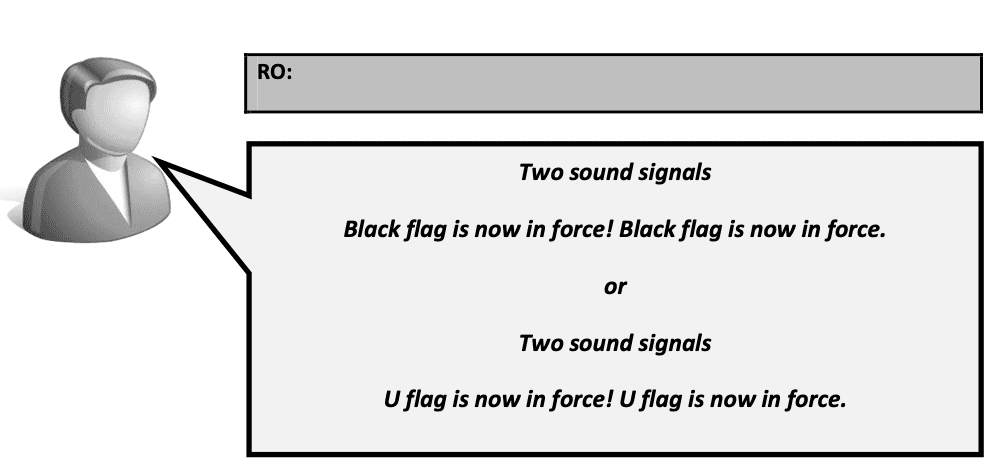
END OF MODULE 8
